Your Guide to the Mid-Willamette Valley Food Trail
Agricultural roots run deep in the mid-Willamette Valley—and over the years, the region has produced generations of family farms, some of the area's top craft breweries, and countless entrepreneurs who share the bounty of the Willamette Valley with visitors from all over the world.
If you'd like to explore the region's rich agricultural history, check out the self-guided Mid-Willamette Valley Food Trail, featuring top producers, restaurants, farm stands, and more.
What is the Mid-Willamette Valley Food Trail?

Gathering Together Farm hosts an on-site market and a cozy restaurant (open April-November) that uses farm-grown ingredients in its dishes.
The Mid-Willamette Valley Food Trail is one of four officially designated food trails in the region. Local farms are part of the fabric of our culinary scene—and the food trail helps you enjoy where much of our food is grown, as well as where it winds up.
The self-guided trail spans wineries, craft breweries, farms, ranches, markets, experiences, and more in the heart of the Willamette Valley.
Some of the most popular crops grown along the trail include:
- Strawberries
- Blueberries
- Wine grapes
- Hazelnuts
- Hops (used in craft beer)
Nearly 60 businesses comprise the Mid-Willamette Valley Food Trail, so how you experience the region is for you to decide. Your choices include:
- Visiting cideries, wineries, and craft breweries for fresh pours
- Taking tours of working farms and ranches
- Hiking through a botanical herb garden
- Noshing on dishes that use fresh, locally sourced ingredients
If you'd like to spend one day traveling the trail, we'd suggest 3-5 stops; that said, a few overnight accommodations make it possible to spend a full weekend savoring the flavors of the region.
Where is the Mid-Willamette Valley Food Trail?
The Mid-Willamette Valley Food Trail extends from the Oregon Coast Range in the west to the Cascade Range foothills in the east. Its businesses are mostly centered around the communities of Corvallis, Albany, Philomath, Lebanon, Sweet Home, and Alsea.
Driving between Alsea (the westernmost community along the food trail) and Sweet Home (the easternmost community) takes about one hour, 10 minutes; driving from the trail's northern edge in Airlie to its southern border in Monroe, meanwhile, takes about 45 minutes via Route 99W.

Block 15 Brewing pours a variety of ales and lagers alongside an elevated pub fare menu at two taprooms in Corvallis.
What Can You Do Along the Mid-Willamette Valley Food Trail?

Midway Farms is a popular stop between Corvallis and Albany.
You can enjoy a variety of farm and farm-inspired experiences along the Mid-Willamette Valley Food Trail:
- Iron Water Ranch is home to a flock of adorable sheep and offers farm tours, fiber-based artwork for sale, fiber art demonstrations, and more.
- Tour more than 250 raised beds growing nearly 700 varieties of specialty herbs at The Thyme Garden near Alsea.
- Just outside of Albany, Midway Farms hosts U-pick flowers, fresh produce for sale, and regular events that range from fire dancing to apple cider pressing.
Food and Drink Along the Mid-Willamette Valley Food Trail
If you want to bring home some produce, fresh from the farm, several growers host seasonal stands and markets that usually open in spring and remain stocked with local delicacies through the fall. Highlights include the following:
- Gathering Together Farm sells fruits, vegetables, eggs, pastries, breads, and more near Philomath.
- Lilliputopia specializes in dry farming (which means its vegetables are grown without irrigation, pesticides, or chemical fertilizers) in Monroe.
- Kiger Island Blues hosts more than 10,000 blueberry bushes and invites visitors to pick four varieties of the juicy berry.
The food trail also features farmers markets in Corvallis and Albany, as well as markets in Lebanon and Sweet Home. Chances are good you'll buy your food from the person who grew it.
You'll also find nearly a dozen eateries, bakeries, and cafés along the food trail that use locally sourced ingredients in their dishes—including the award-winning Sybaris Bistro in Albany, The Dizzy Hen (serving fresh dishes in Philomath), and Mugs Coffee House in Lebanon.
Nearly 20 producers showcase a wide range of craft beverages along the trail, as well—including:
- Sky High Brewing, noted for locally made beers and the best rooftop views in Corvallis.
- 2 Towns Ciderhouse, which crafts creative ciders from locally sourced apples
- Tyee Wine Cellars, which pours flavorful vintages in the midst of a sweeping farm
- Deluxe Brewing Co. and Sinister Distilling Co., crafting thoughtful spirits and easy-drinking beers in Albany

Wide-open rooftop views await in spring, summer, and fall at Sky High Brewing in downtown Corvallis.
Overnight Stays Along the Mid-Willamette Valley Food Trail

Leaping Lamb Farm & Farm Stay raises lambs and offers overnight stays near Alsea.
The Mid-Willamette Valley Food Trail offers a pair of overnight lodging options that invite you to experience a stay on genuine working farms:
- Donovan's Place offers two fully furnished guest houses on a working Christmas tree farm and pottery studio at the western edge of Corvallis.
- Leaping Lamb Farm & Farm Stay raises lambs—and hosts a farmhouse and cottage—in a quiet valley near Alsea. If you'd like, you can help with feeding the animals, collecting eggs, and other chores.










